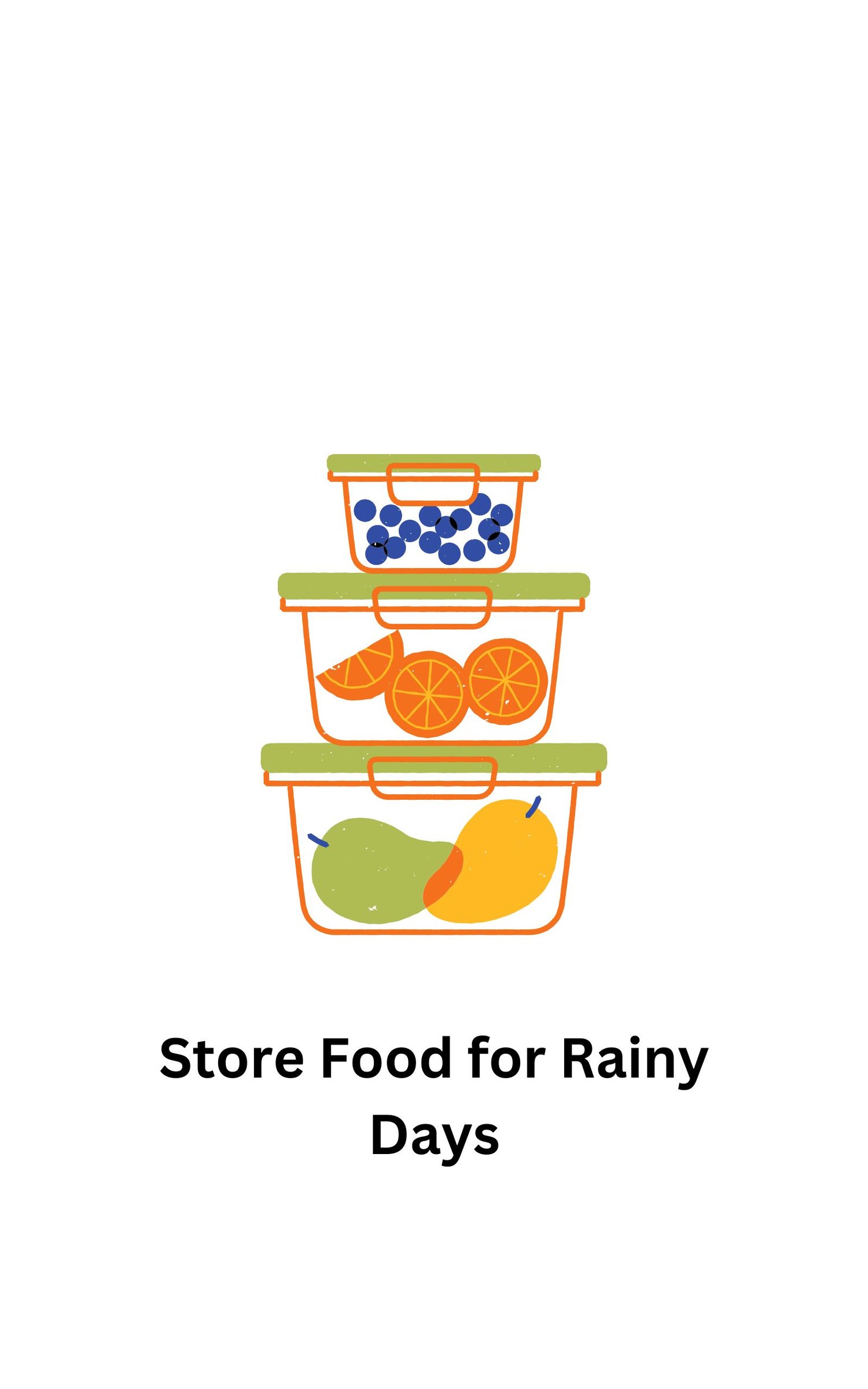In a world where natural disasters, economic instability, and unexpected emergencies are becoming more common, having a long-term food storage plan isn't just a good idea – it's essential. Whether you're new to the concept of prepping or looking to refine your current strategy, this guide will walk you through the key steps to ensure you and your loved ones are prepared for any situation. And for an in-depth look at emergency preparedness, check out my book here
Why You Need a Long-Term Food Storage Plan.
Before we dive into the tips, let’s talk about why a long-term food storage plan is crucial. Imagine a scenario where grocery stores are closed for days or even weeks. How would you feed your family? A well-thought-out food storage plan provides peace of mind and a safety net in uncertain times.
To be on a good side of things, this is what you should do:
Tip 1: Start with the Basics.
The foundation of any long-term food storage plan is understanding what you need. Begin with the basics: water, non-perishable foods, and essential supplies. The general rule is to store enough food and water to last each person in your household for at least three months.
- Water:Aim for one gallon of water per person per day. Don’t forget water for cooking and hygiene.
- Non-perishable foods:Stock up on items like rice, pasta, beans, canned vegetables, and fruits. These have a long shelf life and provide essential nutrients.
Tip 2: Diversify Your Food Supplies
While rice and beans are great staples, eating the same thing every day can get boring fast. To prevent food fatigue, diversify your storage with a variety of foods:
- Canned meats and fish: Tuna, chicken, and beef can add much-needed protein to your diet.
- Dried fruits and nuts: These are great for snacking and add variety to your meals.
- Powdered milk and eggs:These can be used in baking and cooking, providing essential nutrients.
- Freeze-dried meals:These are lightweight, have a long shelf life, and can be a great addition to your storage.
Tip 3: Consider Special Dietary Needs
When planning your food storage, consider any special dietary needs in your household. Whether it’s allergies, intolerances, or preferences, ensure you have appropriate foods stocked. For instance, if someone is gluten intolerant, store gluten-free grains and flours.
Tip 4: Rotate Your Stock
Food rotation is key to maintaining a fresh and usable food supply. Follow the “first in, first out” rule. Use older items before newer ones to ensure nothing goes to waste. Regularly check expiration dates and consume foods that are nearing the end of their shelf life.
Tip 5: Store Food Properly
Proper storage is crucial to keeping your food fresh and safe. Here are some storage tips:
- Cool, dry place: Store food in a cool, dry area away from direct sunlight.
- Airtight containers: Use airtight containers to keep pests out and preserve freshness.
- Vacuum sealing:For longer shelf life, consider vacuum sealing certain foods like grains and dried fruits.
- Label everything:Clearly label containers with the date of storage and expiration dates.
Tip 6: Plan for Cooking Without Power
In an emergency, you may not have access to electricity or gas. It’s important to have alternative cooking methods:
- Portable stoves: Propane or butane stoves are great for cooking without electricity.
- Camping equipment:A camping stove or portable grill can be useful.
- Manual tools: Ensure you have manual can openers, knives, and other kitchen tools.
Tip 7: Practice Using Your Supplies
It’s one thing to have a pantry full of food; it’s another to know how to use it. Practice cooking with your stored supplies to ensure you know how to prepare meals with limited resources. This will also help you identify any gaps in your storage plan.
Tip 8: Don’t Forget About Water Filtration
Water is crucial for survival, but in an emergency, clean water might not be readily available. Invest in a good water filtration system to ensure you have access to safe drinking water. Consider options like:
- Portable water filters: These are great for on-the-go use.
- Water purification tablets: Compact and easy to store.
- Gravity-fed filters: Ideal for larger quantities of water.
Tip 9: Include Comfort Foods
In stressful situations, comfort foods can provide a much-needed morale boost. Include items like chocolate, coffee, tea, and other treats in your storage plan. These small pleasures can make a big difference in an emergency.
Tip 10: Review and Update Your Plan Regularly
Your food storage plan isn’t something you set and forget. Regularly review and update your plan to account for changes in your household, new dietary needs, or expired items. Make it a habit to check your supplies every six months.
Final Thoughts
Creating a long-term food storage plan is an investment in your family’s safety and well-being. By starting with the basics, diversifying your supplies, and regularly maintaining your stock, you’ll be prepared for whatever comes your way. Remember, the best time to prepare is now, not when a disaster strikes.
For a comprehensive guide to emergency preparedness, including detailed tips and strategies, check out my book . Stay safe and be prepared!


